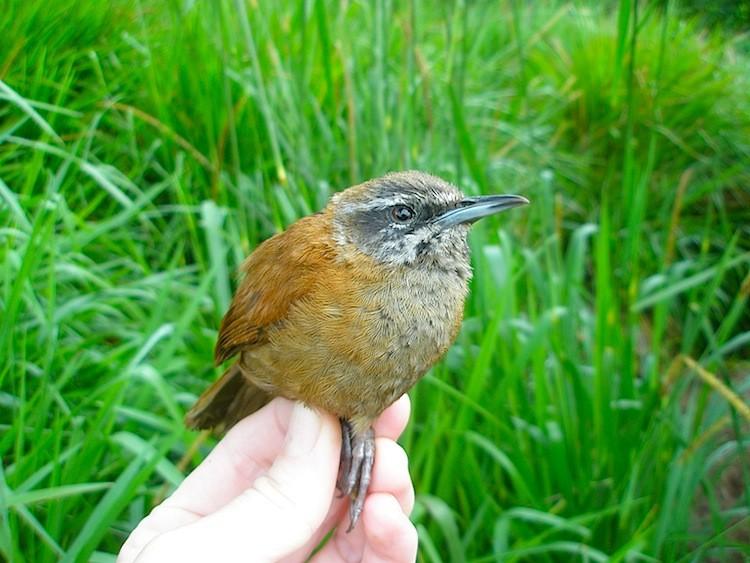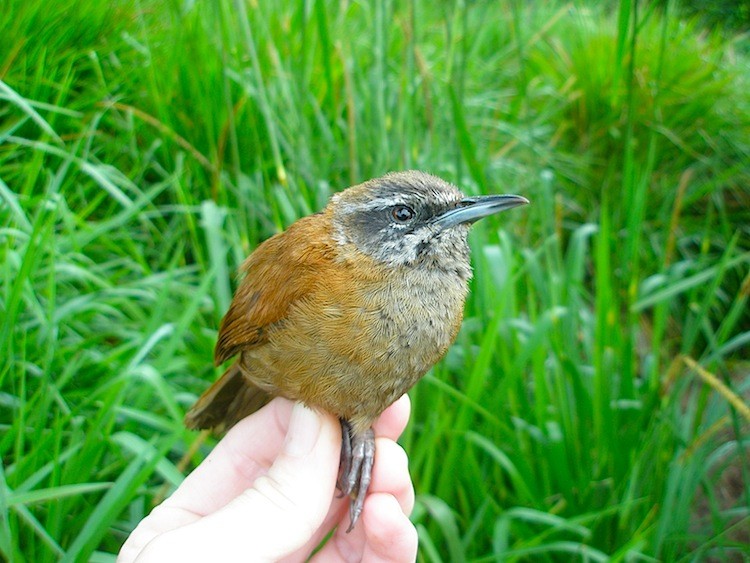Male and female plain-tailed wrens, Pheugopedius euophrys, cooperate to sing duets, alternating song syllables so rapidly that a pair sounds like a single bird, and new research suggests that females may lead repartees.
A team of scientists led by Eric Fortune at Johns Hopkins University in Baltimore have showed that the wren’s brain orchestrates behavior and neurophysiology to synchronize the entire duet, including feedback from its partner.
This finding is contrary to previous research which suggests that songbird brain activity only processes an individual’s singing role.
Fortune and his colleagues monitored and recorded a population of more than 1,000 wrens in Chusquea bamboo forests on the slopes of Antisana volcano in Ecuador.
The team analyzed almost 150 hours of acoustic recordings, and found that female plain-tailed wrens always provide the leading cues for duet singing, while the male birds follow the lead.
When the male wren makes any syllable errors, the female rapidly modulates her singing and continues the duet by increasing the length of the intersyllable interval.
Such behavior suggests that the bird’s nervous system does not work on a fixed-action pattern to produce a duet, but rather it relies on the unique combination of sensory cues from both partners.
Plain-tailed wrens can perform solos equally well, with the acoustic structure and sequence of syllables identical to those of duet pieces.
Solitary songs have long intersyllable intervals, ranging from 0.34 seconds to 1.6 seconds. These intervals occur at the points when the partner would normally sing its syllables during a duet.
The study focused on understanding brain activity that encodes feedback information for coordinated behavior.
The researchers manipulated the recorded sequences by deliberately deleting some of the intersyllable intervals, from either of the sexes, and used them as stimuli to generate responses in the birds.
“Even though the syllables are identical in these stimuli, sequences with naturally occurring intersyllable intervals elicited significantly stronger responses than stimuli without these intervals,” the researchers wrote in their paper, to published in the journal Science on Nov. 4.
The response differed from non-duetting wrens, which were relatively insensitive to differences in the intersyllable intervals.
The team concluded that, similar to a tango performance, a couple is aware of each other’s dance steps, and the moment-to-moment acoustic feedback from both sexes is processed together to coordinate timing while performing the duets.
A team of scientists led by Eric Fortune at Johns Hopkins University in Baltimore have showed that the wren’s brain orchestrates behavior and neurophysiology to synchronize the entire duet, including feedback from its partner.
This finding is contrary to previous research which suggests that songbird brain activity only processes an individual’s singing role.
Fortune and his colleagues monitored and recorded a population of more than 1,000 wrens in Chusquea bamboo forests on the slopes of Antisana volcano in Ecuador.
The team analyzed almost 150 hours of acoustic recordings, and found that female plain-tailed wrens always provide the leading cues for duet singing, while the male birds follow the lead.
When the male wren makes any syllable errors, the female rapidly modulates her singing and continues the duet by increasing the length of the intersyllable interval.
Such behavior suggests that the bird’s nervous system does not work on a fixed-action pattern to produce a duet, but rather it relies on the unique combination of sensory cues from both partners.
Plain-tailed wrens can perform solos equally well, with the acoustic structure and sequence of syllables identical to those of duet pieces.
Solitary songs have long intersyllable intervals, ranging from 0.34 seconds to 1.6 seconds. These intervals occur at the points when the partner would normally sing its syllables during a duet.
The study focused on understanding brain activity that encodes feedback information for coordinated behavior.
The researchers manipulated the recorded sequences by deliberately deleting some of the intersyllable intervals, from either of the sexes, and used them as stimuli to generate responses in the birds.
“Even though the syllables are identical in these stimuli, sequences with naturally occurring intersyllable intervals elicited significantly stronger responses than stimuli without these intervals,” the researchers wrote in their paper, to published in the journal Science on Nov. 4.
The response differed from non-duetting wrens, which were relatively insensitive to differences in the intersyllable intervals.
The team concluded that, similar to a tango performance, a couple is aware of each other’s dance steps, and the moment-to-moment acoustic feedback from both sexes is processed together to coordinate timing while performing the duets.






Friends Read Free